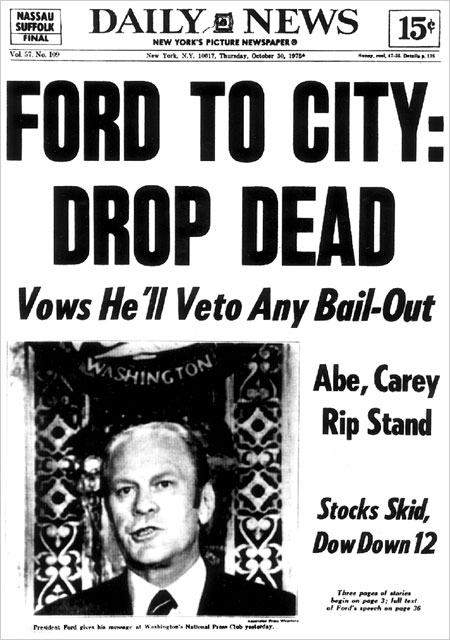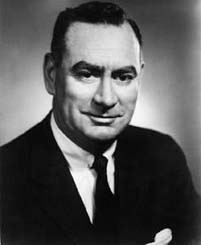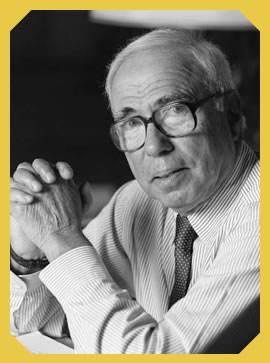Recovery

Mayor Beame
Recovering from the New York City fiscal crisis was a difficult task- a prolonged one as well. The most important change New York City had to institute was the end of its borrowing practices. New York City had simply borrowed too much, and the policy of “borrow now, pay later” had to simply end. New York City’s misguiding, fraudulent accounting practices were also discontinued.
Mayor Beame was the mayor of New York City at the height of this crisis. He instituted a vacancy freeze, ordered a halt to merit increases, a limit on hiring, and an end to the practice of “blankets,” a process under which city agencies undertook hirings and programs without budgetary approval. Under Mayor Beame’s leadership, a moratorium was issued on some or all of New York City’s debt service payments. He also won few concessions from the city’s labor unions; these concessions, however, were not very substantial. As Mayor Beame tried to save the city, he received very little cooperation from the unions. Albert Shanker, the head of the teachers’ union, nearly always opposed givebacks.
But these measures were not enough. Banks soon stopped lending to New York City. Governor Hugh Carey, fearing a default for New York State if the city went down, intervened and provided strong leadership. He appointed Felix Rohatyn, a brillant Wall Street banker who is often credited for playing a key role in saving New York City from catastrophe. Felix Rohatyn came up with the idea of creating the Municipal Assistance Corporation, or MAC. MAC raised money selling bonds backed by sale tax receipts and stock transfer taxes. The goal was to revive the economy while balancing the budget. It worked. The MAC became the appropriate financing mechanism by selling municipal bonds and raised much needed three billion dollars to eliminate the hidden past deficit. Shared sacrifice was the first order of the day in order for MAC to be created. After considerable wrangling, city unions agreed to job cuts, and to invest some of their pension money into MAC bonds. The banks agreed to exchange billions of dollars in short term debt for long term bonds. The MAC was a bipartisan organization, and, most importantly, received the support of the citizens of New York City.
Also under Governor Hugh Carey’s leadership, the Emergency Financial Control Board was created. The board adopted a three year financial plan. The financial plan cut spending by $ 724 million in three years. The EFCB approved major cuts in expenditures across all city agencies. The EFCB also implemented a strict monthly monitoring system for all agencies.
The MAC had been financing the city during this crisis. Soon, however, the market closed to MAC bonds. The city needed new sources of revenue to finance the plans of the EFCB. NYC looked to the federal government to provide federal aid to rescue the city. President Gerald Ford initially refused federal aid to NYC, wanting to castigate NYC for its unsound fiscal policies. Ford’s stance was adequately captured by a New York Daily News headline, ” Ford to City: Drop Dead.” The President’s spokesman compared New York City to a wayward daughter hooked on heroin, saying ” You don’t give her $100 to support her habit.” By November 1975, school districts in other states were having problems selling bonds and banks were increasingly worried about their exposure to a New York default. Other states and governments began having trouble financing themselves because the markets were spooked by New York City’s collapse. Other countries, in particular France and West Germany, expressed concern about a global dollar crisis. These events convinced President Ford to change his mind and give the city $2.3 billion of seasonal financing and three years to balance the budget. Politics in the name of fiscal prudence was risky business, and Ford lost the state of New York and ultimately the presidency in the general elections of 1976.
initially refused federal aid to NYC, wanting to castigate NYC for its unsound fiscal policies. Ford’s stance was adequately captured by a New York Daily News headline, ” Ford to City: Drop Dead.” The President’s spokesman compared New York City to a wayward daughter hooked on heroin, saying ” You don’t give her $100 to support her habit.” By November 1975, school districts in other states were having problems selling bonds and banks were increasingly worried about their exposure to a New York default. Other states and governments began having trouble financing themselves because the markets were spooked by New York City’s collapse. Other countries, in particular France and West Germany, expressed concern about a global dollar crisis. These events convinced President Ford to change his mind and give the city $2.3 billion of seasonal financing and three years to balance the budget. Politics in the name of fiscal prudence was risky business, and Ford lost the state of New York and ultimately the presidency in the general elections of 1976.
This crisis led to the decay of liberalism and a relaxation of democratic ideals. The political structures initiated during the crisis remain in place. Some have argued that New York City became somewhat fascist due to this crisis. The labor unions lost tremendous power and leverage in the city. The city’s budget today operates strictly under the Financial Emergency Act. Under this act, this city is required to balance its budget, follow sound accounting practices. This act ended the city’s policy of “borrow now, pay later.” The fiscal crisis led to better accounting practices, and made the city fiscally sound. Today New York’s reputation for fiscal responsibility is impeccable.
Leaders of the Recovery:

- Governor Carey

- Felix Rohatyn